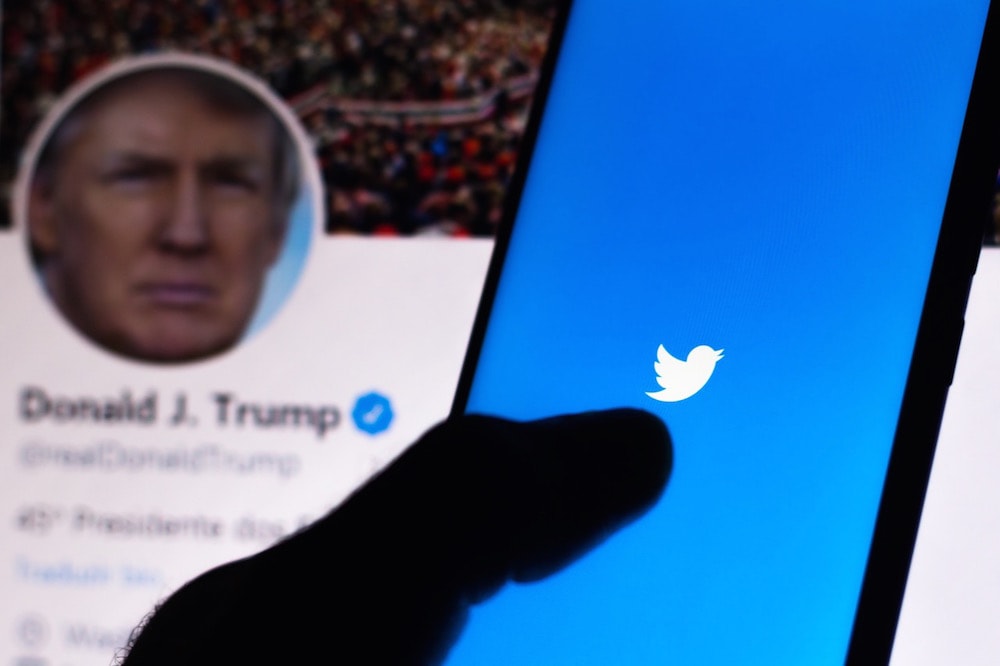A year ago, President Trump issued an Executive Order that deputized federal agencies to retaliate against online social media services on his behalf, a disturbing and unconstitutional attack on internet free expression.
This statement was originally published on eff.org on 28 May 2021.
A year ago today, President Trump issued an Executive Order that deputized federal agencies to retaliate against online social media services on his behalf, a disturbing and unconstitutional attack on internet free expression.
To mark this ignoble anniversary, EFF and the Center for Democracy & Technology are making records from their Freedom of Information Act lawsuit over the Executive Order public. The records show how Trump planned to leverage more than $117 million worth of government online advertising to stop platforms from fact-checking or otherwise moderating his speech.
Although the documents released thus far do not disclose whether government officials cut federal advertising as the Executive Order directed, they do show that the agencies’ massive online advertising budgets could easily be manipulated to coerce private platforms into adopting the president or the government’s preferred political views.
President Trump’s Executive Order was as unconstitutional as it was far-reaching. It directed independent agencies like the FCC to start a rulemaking to undermine legal protections for users’ speech online. It also ordered the Department of Justice to review online advertising spending by all federal agencies to consider whether certain platforms receiving that money were “problematic vehicles for government speech.”
President Biden rescinded the order earlier this month and directed federal agencies to stop working on it. President Biden’s action came after several groups challenging the Executive Order in court called on the president to withdraw the order. (Cooley LLP, Protect Democracy, and EFF represent the plaintiffs in one of those challenges, Rock The Vote v. Biden). EFF applauds President Biden for revoking President Trump’s illegal order, and we hope to be able to say more soon about what impact the rescission will have on Rock The Vote, which is pending before the U.S. Court of Appeals for the Ninth Circuit.
Trump sought to punish online platforms
Despite President Biden’s rescission, the order remains an unprecedented effort by a sitting president to use the federal government’s spending powers to punish private services for countering President Trump’s lies or expressing different views. One section of the order directed the Office of Management and Budget to collect reports from all federal agencies documenting their online advertising spending. The DOJ, according to the order, was then to review that spending and consider each platform’s “viewpoint-based speech restrictions,” and implicitly, recommend cutting advertising on platforms it determined to be problematic.
EFF and CDT filed their FOIA lawsuit against OMB and the DOJ in September of last year so that the public could understand whether Trump followed through on his threats to cut federal advertising on services he did not like. Here’s what we’ve learned so far.
Documents released by OMB show that federal agencies spent $117,363,000 to advertise on online services during the 2019 fiscal year. The vast majority of the government’s spending went to two companies: Google received $55,364,000 and Facebook received $46,827,000.
In contrast, federal agencies spent $7,745,000 on Twitter in 2019, despite the service being the target of Trump’s ire for appending fact-checking information to his tweets spreading lies about mail-in voting.
The documents also show which agencies reported the most online advertising spending. The Department of Defense spent $36,814,000 in 2019, with the Departments of Health and Human Services and Homeland Security spending $16,649,000 and $12,359,000, respectively. The Peace Corps reported spending $449,000 during the same period.
The documents also show that federal agencies paid online services for a variety of purposes. The FBI spent $199,000 on LinkedIn, likely on recruiting and hiring, with the federal government spending a total of $4,840,000 on the platform. And the Department of Education spent $534,000 on advertising in 2019 as part of campaigns around federal student aid and loan forgiveness.
Finally, the Department of Agriculture paid SnapChat $117 in 2018 to create a custom filter for those attending its annual Future Farmers of America convention. We think the filter looked like this.
Withholding government ad spending can be unconstitutional
Stepping back, it’s important to remember that the millions of dollars in federal advertising spent at these platforms gives the government a lot of power. The government has wide leeway to decide where it wants to advertise. But when officials cut, or merely threaten to cut, advertising with a service based on its supposed political views, that is coercive, retaliatory, and unconstitutional.
The government’s potential misuse of its spending powers was one reason EFF joined the Rock The Vote legal team. Federal officials may try to recycle Trump’s tactics in the future to push platforms to relax or change their content moderation policies, so it’s important that courts rule that such ploys are illegal.
It is also why EFF and CDT are pushing for the release of more records from OMB and the DOJ, so the public can fully understand President Trump’s unconstitutional actions. The DOJ, which was charged with reviewing the advertising spending and recommending changes, has only released a few dozen pages of emails thus far. And those communications provide little insight into how far the DOJ went in implementing the order, on top of redacting information the agency cannot withhold under FOIA.
We look forward to publishing more documents in the future so that public can understand the full extent of Trump’s unconstitutional effort to retaliate against online services.



